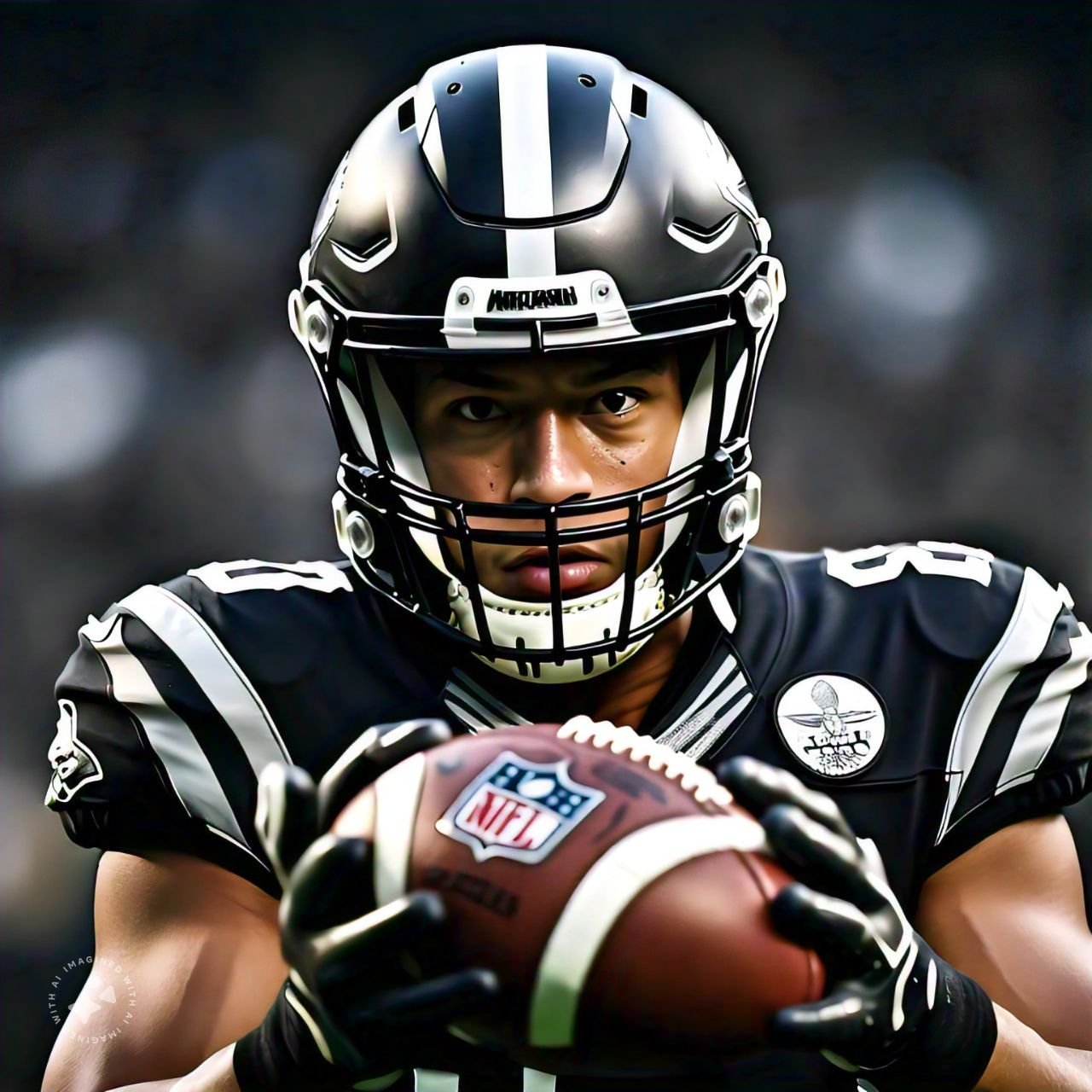The National Football League (NFL) is the premier professional American football league in the world, known for its fast-paced action, strategic complexity, and passionate fan base. Established in 1920, the NFL has grown into a massive organization that not only dominates American sports but also has a global influence. With 32 teams divided between two conferences, the NFL is more than just a sports league—it’s a cultural institution, a billion-dollar business, and a driving force behind American entertainment. In this comprehensive overview, we’ll explore the NFL’s history, its business model, its structure, key milestones, innovations, and the league’s impact on sports culture and society.
History of the NFL
The NFL was founded as the American Professional Football Association (APFA) in 1920 before changing its name to the National Football League in 1922. The league was born out of a need to standardize professional football, which at the time was chaotic and fragmented, with different teams and leagues operating independently.
The early years of the NFL were marked by financial struggles, low attendance, and competition from rival leagues. However, the NFL began to gain stability and popularity in the 1930s and 1940s, particularly with the implementation of the NFL Draft in 1936, which helped to level the playing field by allowing the weaker teams to select the best college players.
One of the defining moments in NFL history was the merger with the American Football League (AFL) in 1970. The AFL had been a competing league that started in 1960, and by the late 1960s, it had grown strong enough to challenge the NFL for talent and viewership. The merger created a unified league with two conferences—the American Football Conference (AFC) and the National Football Conference (NFC)—and established the Super Bowl as the championship game between the two conferences.
NFL’s Structure and Teams
The NFL is composed of 32 teams, split evenly between the AFC and NFC. Each conference is further divided into four divisions—North, South, East, and West—comprising four teams each. Every team plays 17 games during the regular season, followed by the playoffs, which culminate in the Super Bowl.
- Team Ownership: NFL teams are privately owned by individuals or groups, with some of the most famous ownership groups including the Dallas Cowboys’ Jerry Jones and the New England Patriots’ Robert Kraft. Each team operates as a franchise under the league’s collective bargaining agreement and operates within the league’s revenue-sharing framework.
- The Commissioner: The NFL is governed by a commissioner, who oversees the league’s operations, manages disputes between owners and players, and works with broadcast partners and sponsors. Roger Goodell has been the NFL commissioner since 2006, and under his leadership, the league has continued to expand its influence both domestically and internationally.
The Super Bowl: The NFL’s Crown Jewel
The Super Bowl is the most-watched sporting event in the United States and one of the biggest annual sports events worldwide. Played on the first Sunday of February, the Super Bowl pits the champions of the AFC and NFC against each other for the NFL title.
Beyond the game itself, the Super Bowl is a cultural event, featuring performances from top musical artists during the halftime show and high-profile advertisements from global brands. Companies often pay millions for a 30-second commercial spot during the broadcast, which highlights the event’s massive viewership—typically over 100 million in the U.S. alone.
Key Milestones in NFL History
- Introduction of the Forward Pass (1933): While forward passes were legal in football since 1906, it wasn’t until 1933 that the NFL fully embraced the forward pass as a standard offensive strategy. This change made the game faster and more exciting, transforming the way football was played.
- The NFL Draft (1936): The introduction of the NFL Draft revolutionized team building by ensuring that the best college talent was distributed fairly across the league. It also marked the beginning of the NFL’s dominance in American sports, with college football becoming a crucial talent pool.
- First Televised Game (1939): The NFL played its first televised game in 1939, between the Philadelphia Eagles and the Brooklyn Dodgers. Television played a crucial role in the growth of the NFL, transforming it into a sport that could be enjoyed by millions of fans from the comfort of their homes.
- AFL-NFL Merger (1970): The merger between the AFL and NFL created a stronger, more competitive league. The formation of two conferences and the introduction of the Super Bowl as the ultimate championship game paved the way for the NFL’s modern structure.
- Advent of Monday Night Football (1970): Monday Night Football, which debuted in 1970, became a cultural phenomenon, turning football into a primetime spectacle. It also helped the NFL secure a dominant position in the television landscape.
NFL Business Model
The NFL’s business model is incredibly lucrative, with revenue generated from a combination of television rights, sponsorship deals, ticket sales, and merchandise. The league’s success is driven by its ability to create engaging content, attract a massive fan base, and monetize every aspect of the game.
- Broadcast Rights: One of the NFL’s most significant sources of revenue comes from broadcast rights. The league has long-term contracts with major networks like CBS, NBC, FOX, and ESPN, as well as digital platforms such as Amazon Prime. These deals are worth billions of dollars and guarantee the NFL a steady stream of income.
- Revenue Sharing: One of the NFL’s defining features is its revenue-sharing model, which ensures that all teams benefit from the league’s overall financial success. Broadcast revenue, for example, is distributed equally among all 32 teams, regardless of market size or on-field performance. This system promotes parity and helps maintain a competitive balance within the league.
- Sponsorship Deals: The NFL has sponsorship agreements with some of the world’s biggest brands, including Pepsi, Nike, and Microsoft. These companies pay top dollar to associate their products with the NFL brand, which offers unparalleled exposure to a global audience.
- Merchandise and Licensing: The NFL also generates significant revenue through merchandise sales and licensing deals. NFL jerseys, hats, and memorabilia are highly popular among fans, and the league’s licensing agreements ensure that it receives a cut of sales from official merchandise.
- Ticket Sales and Game Day Revenue: Although television rights and sponsorships account for a significant portion of the NFL’s income, ticket sales are still a crucial revenue stream. Game-day revenues, including concessions and parking, add millions to the bottom line for each team.
Player Development and the NFL Draft
The NFL Draft is one of the most important events in the league’s calendar, where teams select eligible college football players to join their rosters. Held annually in April, the draft consists of seven rounds, and the order of selection is based on the teams’ performance in the previous season, with the worst-performing team picking first.
The draft is a crucial mechanism for maintaining competitive balance within the league, as it allows weaker teams to acquire top talent. The NFL’s salary cap system further ensures that no single team can dominate the league by outspending its competitors on player contracts.
The NFL also operates developmental programs, such as the NFL Scouting Combine, where prospective players showcase their athletic abilities in front of team executives and coaches. College football, particularly in the NCAA, serves as the primary pipeline for player development, and the NFL closely monitors college prospects.
Rule Changes and Safety Measures
The NFL has continuously adapted its rules to make the game safer and more entertaining. One of the most significant issues facing the NFL in recent years has been player safety, particularly concerning concussions and long-term health effects like chronic traumatic encephalopathy (CTE).
- Concussion Protocols: In response to mounting concerns over player safety, the NFL implemented stricter concussion protocols. Players showing signs of a concussion are now immediately removed from the game and must be cleared by independent medical professionals before returning to play.
- Rule Changes to Reduce Injuries: The NFL has made several rule changes to reduce the risk of injuries, particularly to the head and neck. For example, it has banned helmet-to-helmet hits, prohibited leading with the crown of the helmet, and implemented changes to kickoffs, which have historically been a source of high-impact collisions.
- Helmet Technology: The NFL has invested in advanced helmet technology, working with manufacturers to develop helmets that provide better protection against concussions. The league also encourages players to wear these improved helmets and penalizes teams for non-compliance.
The NFL and Social Impact
The NFL is not just a sports league; it plays a significant role in shaping American culture and society. The league has been involved in various social initiatives, from supporting military veterans to promoting diversity and inclusion.
- Social Justice Initiatives: In recent years, the NFL has made a concerted effort to address social justice issues. The league launched the “Inspire Change” initiative, which focuses on education, economic advancement, police and community relations, and criminal justice reform. NFL players have been at the forefront of social justice movements, with protests during the national anthem bringing national attention to issues like racial inequality.
- Diversity and Inclusion: The NFL has taken steps to promote diversity within its ranks, both on and off the field. The Rooney Rule, implemented in 2003, requires teams to interview minority candidates for head coaching and senior football operations jobs. While progress has been slow, the rule has brought more attention to the need for diversity in leadership positions.
- Military and Veteran Support: The NFL has long been a strong supporter of the U.S. military, with programs like “Salute to Service” honoring active-duty service members and veterans. The league also donates millions of dollars annually to organizations that provide support and resources to veterans.
Conclusion
The NFL is a global powerhouse in the world of sports, entertainment, and business. Its long history, strategic innovations, and massive cultural impact make it a key player in American and international sports. The league continues to evolve, addressing new challenges such as player safety and social justice while maintaining its position as a leader in sports entertainment. Whether you’re a fan of the game or someone interested in the business side of things, the NFL’s influence on modern culture is undeniable.

